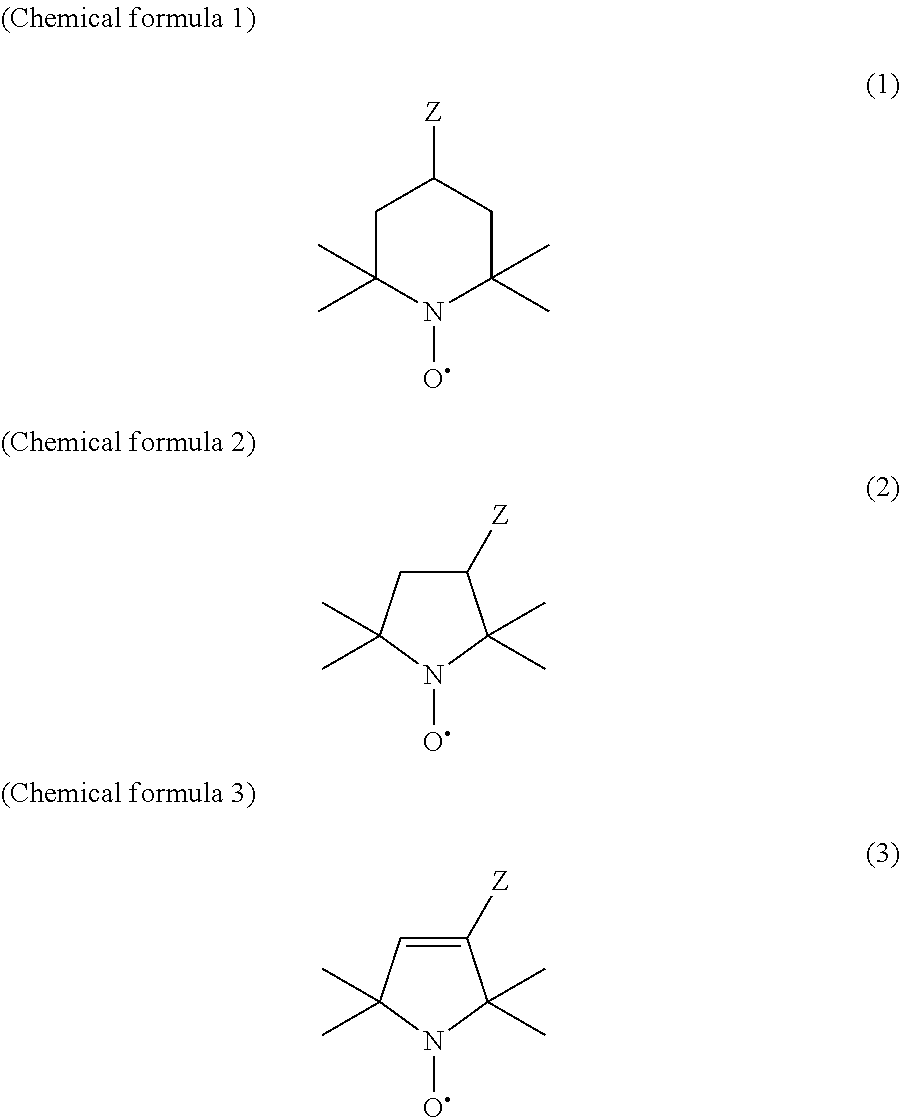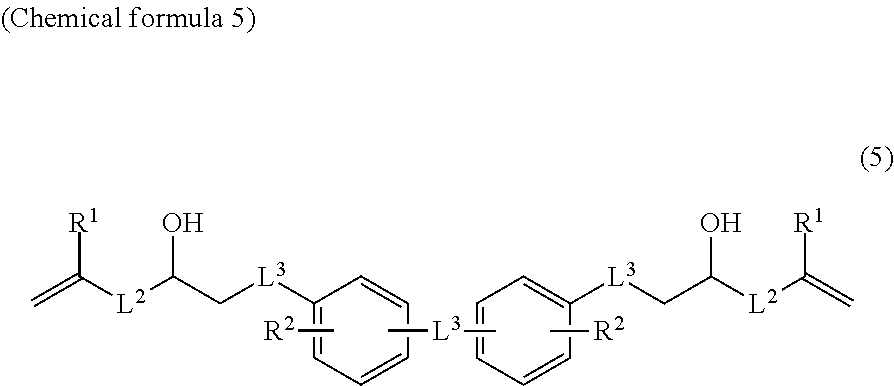Photosensitive material, holographic recording medium and holographic recording method
a technology of holographic recording and material, which is applied in the direction of holographic processes, photomechanical devices, instruments, etc., can solve the problems of deterioration of the transfer rate in the recording system, the disadvantage of the recording/reproducing system, etc., and achieves high sensitivity, large capacity, and high m#.
- Summary
- Abstract
- Description
- Claims
- Application Information
AI Technical Summary
Benefits of technology
Problems solved by technology
Method used
Image
Examples
example 1
Blend of Photosensitive Material
[0091]First of all, 33.8 parts by mass of hexamethylene diisocyanate (made by TOKYO CHEMICAL INDUSTRY CO., LTD) and 56.3 parts by mass polyethertriol (made by ADEKA CORPORATION, G-400, mean molecular weight: 425, refractive index nD=1.469) as the polymer matrix formation components, and 0.08 part by mass of dibutyltin dilaurate (made by TOKYO CHEMICAL INDUSTRY CO., LTD) as the polymer matrix formation catalyst) were mixed, and then 0.2 part by mass (0.056 molar ratio for the corresponding polymerization monomer) of 4-hydroxy-2,2,6,6-tetramethylpipelidine-1-oxyl (made by Sigma-Aldrich Co., LLC) as the stable nitroxyl radical was mixed. Then, 1.0 part by mass of 3-butenoic acid additive of 9,9-bis(4-(2-hydroxyphenyl)fluorene diglycigyl ether as the compound having radical polymerization reactive group, 4.0 parts by mass of phenyl(4-vinylphenyl)sulfide (made by NIPPON STEEL & SUMIKIN CHEMICAL CO., LTD.) as the radical polymerization monomer, 0.6 part by ...
example 2
[0093]The intended holographic recording medium was obtained in the same manner as Example 1 except that 0.1 part by mass (0.056 molar ratio for the corresponding polymerization monomer) of 4-hydroxy-2,2,6,6-tetramethylpipelidine-1-oxyl, 2.0 parts by mass of phenyl(4-vinylphenyl)sulfide and 6.0 parts by mass of o-acetyl tributyl citrate were mixed.
example 3
[0094]The intended holographic recording medium was obtained in the same manner as Example 2 except that 58.5 parts by mass of pentaerythritol propoxylate (made by Sigma-Aldrich Co., LLC, mean molecular weight: 629, refractive index nD=1.460) instead of the polyethertriol and 31.7 parts by mass of hexamethylene diisocyanate were mixed.
PUM
| Property | Measurement | Unit |
|---|---|---|
| wavelength range | aaaaa | aaaaa |
| thickness | aaaaa | aaaaa |
| thickness | aaaaa | aaaaa |
Abstract
Description
Claims
Application Information
 Login to View More
Login to View More - R&D
- Intellectual Property
- Life Sciences
- Materials
- Tech Scout
- Unparalleled Data Quality
- Higher Quality Content
- 60% Fewer Hallucinations
Browse by: Latest US Patents, China's latest patents, Technical Efficacy Thesaurus, Application Domain, Technology Topic, Popular Technical Reports.
© 2025 PatSnap. All rights reserved.Legal|Privacy policy|Modern Slavery Act Transparency Statement|Sitemap|About US| Contact US: help@patsnap.com



